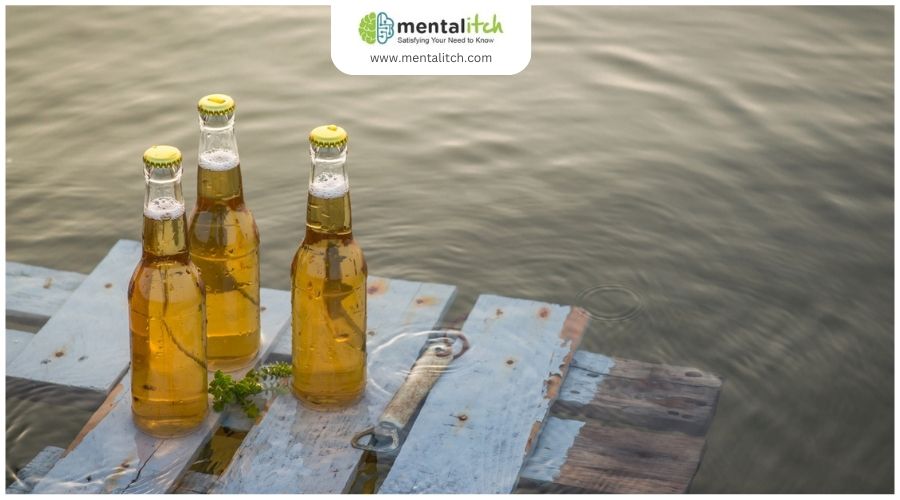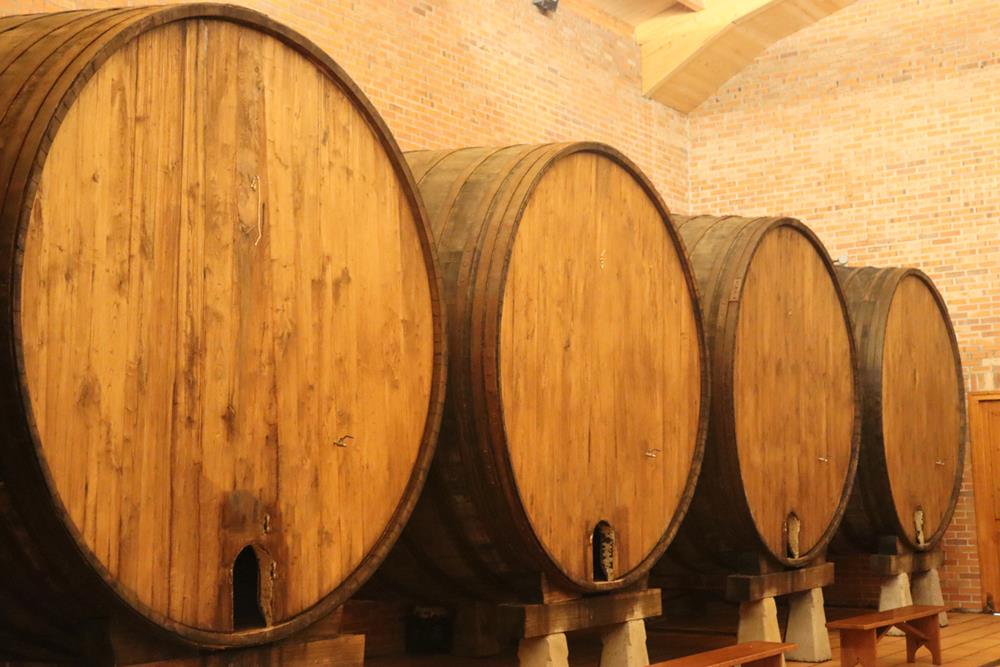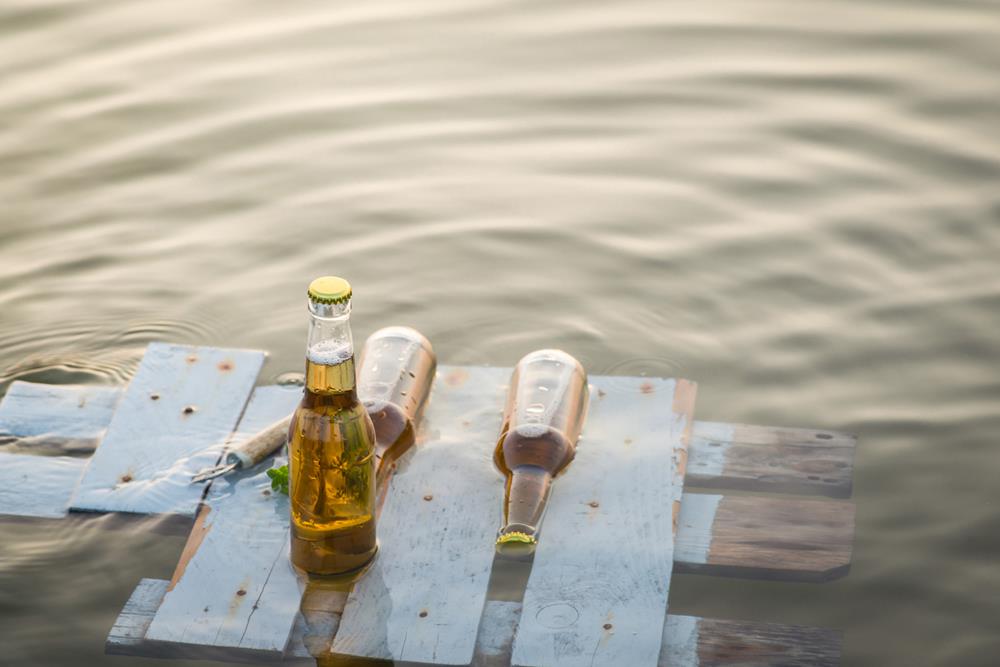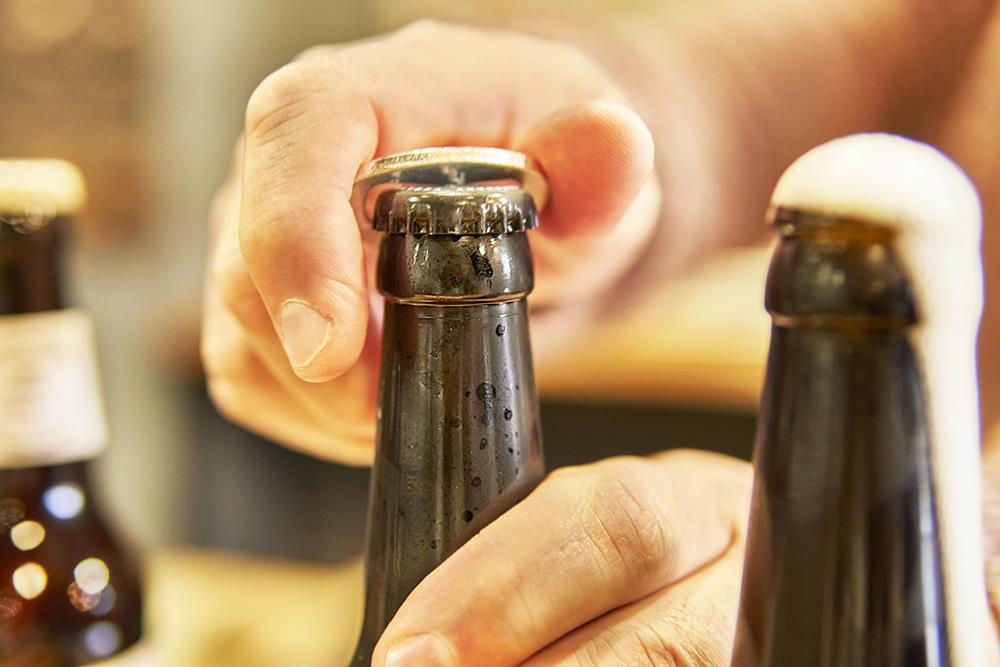Have you ever thought about what happens to beer when you leave it underwater for a while? Usually, when people make beer, they let it sit in a cool, dark place to get better with time, just like how some cheeses or wines are aged to taste better. But some brewers are trying something really cool: they’re putting their beer underwater to age it.
This might sound a bit strange, but there’s a good reason behind it. Aging beer underwater is a new way to see if it can make the beer taste even more amazing and unique. In this article, we’re going to look at what happens when beer ages underwater and how it changes the way the beer tastes and feels. Let’s dive in and explore this underwater beer-aging adventure!
Introduction to Beer Aging
Beer aging is like letting a loaf of bread sit to bring out its best taste but for beer. When people make beer, they sometimes keep it in a special place for a while before drinking it. This waiting time helps the beer taste better, just like waiting for a cake to bake. Lately, some people have started to age beer underwater, thinking it might taste even more interesting. We’re going to talk about why they do this and what it does to the beer.
The Basics of Beer Aging
Beer aging is when you let beer sit for some time after making it. The idea is to make the beer taste smoother or bring out new flavors that you don’t get right after it’s made. It’s a bit like aging cheese or wine; over time, the taste changes and often gets better.
People have been aging beer for a long time, usually in cellars or special rooms. The traditional way is to keep the beer cool, dark, and still. This can take months or even years. Now, some are trying new ways, like putting beer underwater, to see if it changes the taste in cool ways.
What Changes the Beer?
When beer ages, a few things can make its taste change:
- Temperature: Cooler temperatures slow down changes in the beer, making the flavors develop more slowly and smoothly.
- Light: Keeping beer in the dark stops light from making the beer taste “skunky” or bad.
- Containers: The material of the container (like glass, metal, or wood) can add its own taste to the beer. Wood barrels, for example, can make beer taste a bit like vanilla or spices because of the wood’s natural flavors.
Aging beer is all about waiting for the right moment when it tastes the best. Some beers get better with age, while others are best enjoyed fresh. By trying different ways to age beer, like underwater, people are always discovering new tastes and making beer even more enjoyable.
Diving into Underwater Aging
Underwater beer aging is like taking the adventure of aging beer to the depths of the sea. Imagine placing barrels or bottles of beer underwater, where the sea’s unique conditions work their magic. This section dives into what underwater aging is, why brewers are drawn to it, and what makes it so special.
What is Underwater Beer Aging?
Underwater beer aging involves storing beer in a watery abyss, either in the sea or in freshwater lakes. This method utilizes the sea’s natural, stable environment to age beer in a unique way. Beers are placed in secure containers or special barrels and sunk to specific depths where conditions are just right.
Why Choose the Deep Blue?
Brewers turn to the sea for several compelling reasons:
- Constant Temperature: The bottom of the sea has a consistent cool temperature, perfect for aging beer without the fluctuations found on land.
- Pressure: The high pressure deep underwater can influence the density and carbonation of the beer, potentially leading to smoother textures.
- Darkness: Sunlight can’t reach deep sea levels, providing an ideal dark environment to prevent light-induced spoilage.
- Gentle Motion: The ocean’s currents gently rock the beer, which can encourage the aging process by subtly mixing the contents without introducing too much oxygen.
The Process in Action
The process of aging beer underwater can vary, but here’s a general overview:
- Preparation: Brewers decide on the type of beer and container. This could be anything from specially designed bottles to wooden barrels.
- Submersion: The beer is then securely sealed and lowered to a predetermined depth, where it will stay for months or even years.
- Retrieval: After the aging period, the beer is carefully brought back to the surface, ready for tasting and analysis.
Historical Inspiration and Modern Experimentation
The idea isn’t entirely new. Stories of sunken ships with perfectly preserved wine and beer inspire modern brewers to experiment with underwater conditions. Some breweries have turned this into a special event, retrieving their underwater treasures with fanfare and hosting tastings to compare them with their land-aged counterparts.
Underwater aging is an exciting blend of tradition and innovation, offering a new frontier for brewers to explore. This method not only challenges the conventional wisdom of beer aging but also adds a layer of mystery and romance to the brewing process. As we continue to discover how the deep sea’s embrace affects the flavor and quality of beer, underwater aging stands out as a testament to the craft beer industry’s creativity and adventurous spirit.
Impact on Flavor and Quality
The unique conditions of underwater aging have a distinct impact on the flavor and quality of beer. This part of the journey into underwater beer aging explores how the deep sea alters the brew that emerges from the depths.
Flavor Enhancements and Transformations
- Complexity and Smoothness: The high pressure and consistent temperatures found underwater can lead to a beer that’s smoother and more complex in flavor. These conditions may enhance the melding of flavors and mellow out harsh notes.
- Unique Taste Profiles: Some brewers report that underwater-aged beers acquire unique taste profiles that are not achievable through traditional aging methods. This could include enhanced sweetness, a more pronounced malt character, or unexpected fruity or spicy notes.
- Carbonation and Texture: The increased pressure underwater can affect the carbonation levels of the beer, potentially creating a finer, more velvety texture. This subtle change can alter the mouthfeel of the beer, making it more pleasing to the palate.
Quality Improvements
- Stability and Consistency: The lack of light and stable temperatures helps preserve the beer in a more controlled environment, potentially increasing its shelf life and maintaining quality over time.
- Reduced Oxidation: With less oxygen exposure underwater, there’s a reduced risk of oxidation, which can degrade beer quality by introducing off-flavors and aromas. This preservation aspect can keep the beer tasting fresher and truer to its intended profile.
Comparative Studies and Tastings
Brewers and enthusiasts often conduct side-by-side tastings of underwater-aged beer versus its traditionally aged counterpart. These comparisons frequently highlight significant differences, with many tasters preferring the underwater-aged version for its depth and enhanced characteristics.
Some breweries have documented their underwater aging experiments, shared detailed tasting notes, and invited feedback from the beer community. These events not only serve as a fascinating study of aging techniques but also as a celebration of innovation in brewing.
A Dive into the Unknown
The process of underwater aging and its effects on beer are still being explored, with every batch serving as a new experiment. The variables of depth, water type (saltwater vs. freshwater), and duration of aging all play a role in the final outcome, making each underwater-aged beer a unique discovery.
The impact of underwater aging on flavor and quality is a testament to the dynamic nature of brewing. As brewers continue to push the boundaries of this method, the craft beer world eagerly awaits the next treasure to emerge from the deep, ready to savor the novel and intriguing flavors that lie beneath the surface.
Challenges and Considerations
While the appeal of underwater beer aging is undeniable, diving into this uncharted territory comes with its own set of challenges and considerations. These hurdles are not insurmountable but require careful planning, innovation, and, sometimes, a willingness to accept the unexpected.
- Submersion and Retrieval: One of the primary logistical hurdles is the process of safely submerging and then retrieving the beer. This requires specialized equipment and knowledge of maritime operations, making it more complex than traditional aging methods.
- Location and Permissions: Finding a suitable underwater site and obtaining the necessary permissions can be a lengthy process. Brewers must ensure their activities comply with environmental regulations and do not disrupt local ecosystems or maritime activities.
- Monitoring Conditions: While the underwater environment provides stable conditions, monitoring these conditions over time can be challenging. Brewers need innovative solutions to track the aging process without disturbing the beer.
- Initial Investment: The upfront costs of underwater aging can be significant. Special containers, waterproof labels, and the logistics of submersion and retrieval all add to the expense.
- Risk of Loss: The potential for losing batches to the depths or encountering unforeseen complications adds a financial risk to underwater aging projects.
- Ecosystem Impact: It’s crucial to consider the impact of underwater aging on marine environments. Brewers must ensure their activities do not harm aquatic life or contribute to pollution.
- Sustainability: The sustainability of underwater aging practices is another consideration. While it offers a novel way to age beer, the method must be sustainable to justify its continued use.
- Container Integrity: Ensuring the beer containers can withstand underwater pressure and conditions is vital to prevent leaks or contamination.
- Recovery Plans: Having a robust plan for retrieving the submerged beer is essential for safety and to ensure the beer remains intact and uncontaminated during the process.
- Consumer Perception: Introducing consumers to the concept of underwater-aged beer and convincing them of its value and unique qualities can be a challenge.
- Educational Efforts: Brewers may need to invest in educational efforts to explain the process, benefits, and reasons for the higher price point of underwater-aged beers.
Despite these challenges, the pursuit of underwater beer aging speaks to the innovative spirit of the craft brewing community. Each hurdle offers an opportunity to learn, adapt, and further refine this intriguing method. As more brewers explore the depths to age their beer, the collective knowledge and experience gained will help navigate these challenges more effectively, paving the way for future underwater aging projects.
Conclusion
Aging beer underwater is like unlocking a hidden treasure chest of flavors. It’s an exciting adventure that can make beer taste even more special. This method faces challenges, like figuring out how to do it and making sure it’s safe for the sea, but the unique tastes it brings are worth the effort. As more brewers try this out, we might see more underwater-aged beers, each with its own story from the deep. It’s a reminder that making beer is not just science and tradition but also creativity and exploration.





